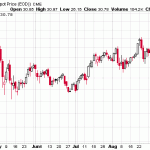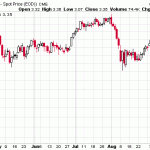As Yellow Media’s shares (preferred and common) continue their descent to zero, they did release what was in their restated credit facility (attachment).
Notably are the following:
1. Article 8 covenants are fairly obvious – the company must report annual and quarterly statements in compliance with GAAP, etc. There is a reference to budgets and projections (8.1 (c) and (d)) that will likely mean that the creditors will have material information that the public does not have. Probably the same people dumping the preferred shares well in advance of this calamity!
[8.1 (d)] (x) a breakdown of print and online revenues, (y) distributable cash flow and distribution calculations and (z) expected revenue drivers and which projections should be in a format consistent with the September, 2011 Projections.
Also 8.10 requires the company to include more guarantors to the creditor agreement which are subsidaries of the company.
2. Article 9 covenants are more restrictive. They prohibit the taking out of further debt unless if under the credit agreement, except for minor items including capital lease obligations no greater than $25M, and also other minor conditions including intra-company debt;
9.3 prevents the company from acquiring or liquidating companies without being able to satisfy the existing covenants on a pro forma basis;
9.4 requires the company to remit any proceeds above $25M in a sale to the creditors necessary to achieve compliance with covenants on a pro-forma basis;
9.5 is the salient clause – it prohibits distributions to common shareholders (except for the last 2.5 cent common dividend upcoming), but includes the following clause:
(iv) the Borrower may declare and pay dividends on the preferred shares of the Borrower existing as at the date hereof,
This would suggest, as long as the company can make its other covenants that the preferred shares will continue paying dividends.
The important covenants, the performance-related ones, are the following:
9.7 Consolidated Total Debt to Consolidated EBITDA Ratio
The Borrower will not permit the Consolidated Total Debt to Consolidated
EBITDA Ratio for any Test Period beginning with the first Test Period ending after the Closing
Date to be greater than the ratio of 3.50 to 1.9.8 Consolidated EBITDA to Consolidated Interest Expense Ratio
The Borrower will not permit the Consolidated EBITDA to Consolidated Interest
Expense Ratio for any Test Period beginning with the first Test Period ending after the Closing
Date to be less than the ratio of 3.5 to 1.
9.7 is a stronger covenant than 9.8; using the first half of 2011 results as a measure of these two, the company’s ratios would be as follows:
9.7: EBITDA (12-month extrapolated, realizing this is a flawed extrapolation) $366.5M*2 = $733M, debt at June 30, 2011 is $2.39B, for a ratio of 3.26:1. There was a large amount of debt paydown for the Trader Corporation sale, but the larger risk is the EBITDA number.
9.8: EBITDA: $366.5M for the first half; $84.6M in financial charges for the first half, for a ratio of 4.33:1; the financial charges going forward will be less due to the repayment of MTN’s, but the obvious risk here is the decreasing EBITDA;
The raw math boils down to the following: Can YLO keep its head above the EBITDA water? With the Trader Corporation sale, the company will have about $1.7B in debt to worry about, which means that its ultimate concern is being able to generate about $480M in EBITDA on an annual basis (or less if it continues to pay down debt). At present when you extrapolate the trajectory that its EBITDA is declining (2009: $903M, 2010: $860M, 2011: $366.5M in the first half), can they level it off at about 40% less than its 2009-2010 run rate?
If so, the company can survive its credit facility. If not, there will be a default.
High risk, high reward.
The optimistic scenario is if they can stem the decay and be able to survive its credit facility – I would guess that the preferred shares in such a case would trade around $17-18 if there is clear evidence that this is happening. Obviously we do not see any of that evidence currently and the next quarterly report is just as likely to be brutal.
Students of history will also remember that when Nortel was going through its preliminary death throes in 2002, they were contemplating restructuring and their preferred shares went down to about $1-2 before finally coming back up again. I remember that quite distinctly although I never purchased into Nortel preferreds back then. The analogy is not appropriate to this case (different business, different situation) but what is salient is that low prices give high risk, high reward type situations – there are many scenarios where it is likely that the preferreds of YLO will go to zero, but there are plausible cases where they will rise again.
This is why you never ever put significant fractions of your portfolio into picks that are high risk like this one – keep the bets tiny. At this point it’s really tough to distinguish between investing and gambling. Just as a point of reference, if you put 2% of your portfolio into a play like this and it goes up 10-fold (which the low-probability winning scenario is for the preferred shares if the company actually manages to get its act together), that 2% position will be a 20% position at the end of the day if you do not rebalance.
Just remember the likely scenario is that the 2% goes to zero!



